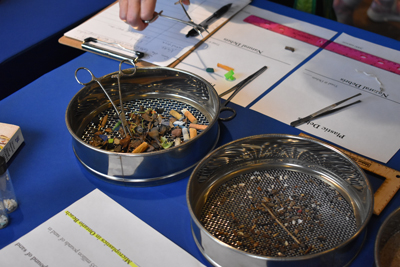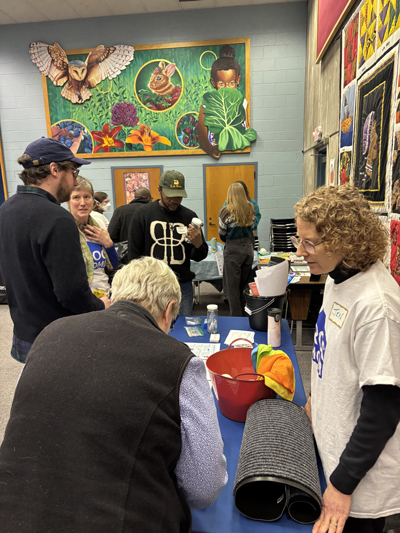Emerging Environmental Contaminants
Emerging Environmental Contaminants
Microplastics and Human Health

Plastic and natural debris found in a sample of sand from a Lake Ontario beach
Microplastics are tiny pieces of plastic that can be manufactured directly or arise from the breakdown of larger pieces of plastic. Microplastics have been found in water, plants, animals, and even human bodies, giving rise to public concern. However, their effects on human health are uncertain. The CEC partners with EHSC researchers, the Lake Ontario MicroPlastics Center, Life Sciences Learning Center, and other groups to identify information needs and develop and disseminate materials about microplastics and human health.
ECHO in Rochester

Dr. Dave Rich, an investigator on the ECHO-Babies project, presented at the December 2024 Community Advisory Board meeting
The NIH Environmental Influences of Child Health Outcomes (ECHO) program seeks to understand how environmental factors affect child health and development. Several projects (ECHO-UPSIDE, UPSIDE-MOMS, ECHO-Babies) focus on the Rochester ECHO cohort, led by Dr. Tom O’Connor. One area of focus enabled by the data collected by these projects has been the detection of novel chemicals and chemicals of emerging concern, such as PFAS and phthalates, in pregnant individuals. Another key area has been investigating local variations in air quality and health outcomes. The CEC coordinates with the ECHO team and local partners to share findings emerging from the ECHO cohorts.
Report-back of Personal Exposure Results

An informational table about the ROC HOME study at a community meeting
Over the past 10 years the CEC has been developing expertise in report-back of individual environmental health research results. For example, the CEC worked with the ROC HOME study team at University of Rochester and the Silent Spring Institute and community partners to develop report-back materials for semi-volatile organic compounds in urine and household dust. We worked with RENEW to provide community feedback on the reports while in development and organized community meetings to share initial study findings with community members and partners, including the Rochester Healthy Home Partnership and our Community Advisory Board. Learn more about the ROC HOME study.